The Prussia of North America
For the Canadian nation to save itself from euthanization by liberal multiculturalism, it needs to see itself for what it really is - reactionary, traditionalist, illiberal, and martial.
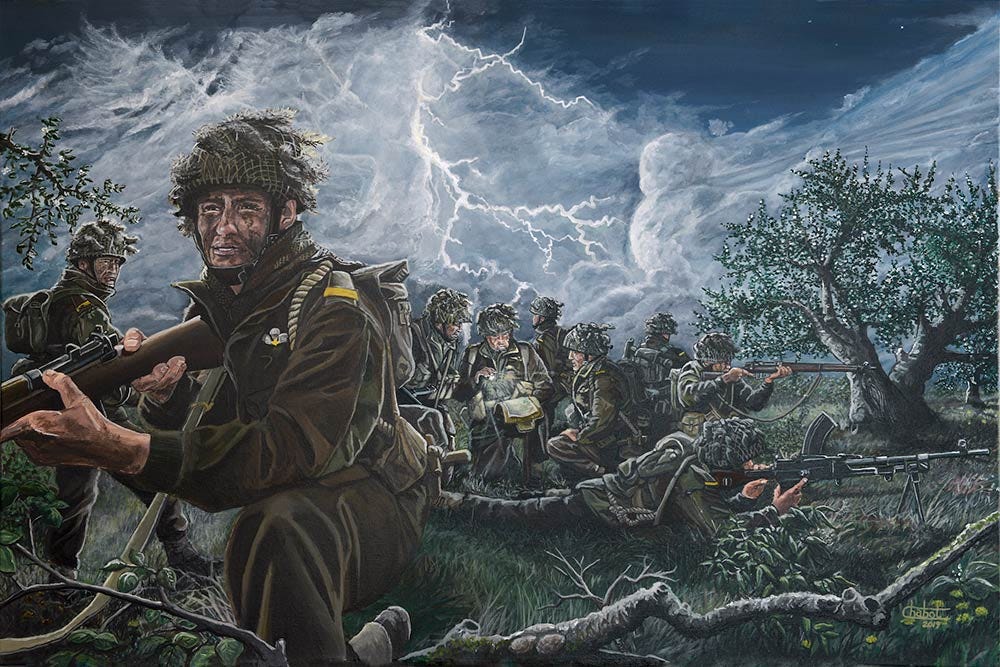
In perennial contrast to its tumultuous southern neighbour, Canada has the reputation of being an extremely boring country.
America’s seeds were planted by grim Puritans seeking a blank slate on which to inscribe the New Jerusalem, and by aristocratic cavaliers who wanted to live the good life while their slaves worked the plantations growing cash crops for the European drug trade. The seeds of America’s hat were planted by fur traders gathering raw materials for funny hats.
America was born in the bloody historical rupture of the Revolutionary War, casting off the yoke of monarchical tyranny in an idealistic struggle for liberty. Canada gained its independence by politely asking mummy dearest if it could be its own country, now, pretty please with some maple syrup on top.
America was split apart in a Civil War that shook the continent, drowning it in an ocean of blood over the question of whether the liberties on which it was founded ought to be extended as a matter of basic principle to the negro. Canada has never had a civil war, just a perennial, passive-aggressive verbal squabble over Quebec sovereignty1.
America’s western expansion was known for its ungovernable violence – cowboys, cattle rustlers, gunslingers, and Indian wars. Canada’s was careful, systematic, and peaceful – disciplined mounties, stout Ukrainian peasants, and equitable Indian treaties.
Once its conquest of the Western frontier was wrapped up, America burst onto the world stage as a vigorous imperial power, snatching islands from the Spanish Empire, crushing Japan and Germany beneath the spurred heal of its cowboy boot, and staring down the Soviet Union in the world’s longest high-stakes game of Texas Hold’Em. Canada, ever dutiful, did some stuff because the British asked nicely, and then they went home to play hockey.
America gave the world jazz music, rock and roll, and hip-hop; Canada contributed Celine Dion and Stan Rogers. America has Hollywood; Canada, the National Film Board and the Canadian Broadcasting Corporation. America dressed the world in blue jeans and leather jackets; Canadians, flannel and toques. America fattened the people with McDonald’s; Canada burnt their tongues with Tim Horton’s, eh2.
The national stereotypes and mythologies of the preceding paragraphs aren’t deceptive, per se. Stereotypes are always based in reality; national mythologies, as with any successful mythology, need to be true at some level in order to resonate with the nations that they’re intended to knit together. Of course, national mythologies usually leave a few things out, emphasizing or exaggerating some elements at the expense of others in the interests of telling a good story. Revisionists, malcontents, and subversives love to pick at the little blind spots and inconsistencies that result in order to spin their own anti-narratives, intended as a rule to dissolve rather than fortify national cohesion and will. Howard Zinn’s People’s History of the United States is a good example of this kind of thing, as is Nikole Hannah-Jones’ tendentious 1619 Project.
Probably the most immediately obvious difference between Americans and Canadians is that Americans don’t suffer from a permanent identity crisis. Demographic dilution due to decades of mass immigration notwithstanding, Americans by and large know who they are, implicitly, without having to flagellate themselves with endless introspective navel-gazing about what it means to be an American. The result of this is that most American media isn’t self-consciously “American”; there are exceptions, of course, such as the occasional patriotic war movie, but for the most part the stories Americans tell are just stories about people who happen to be American doing things that happen to be set in America. Except when the characters aren’t American at all, as in a historical epic set in ancient Rome, or aren’t set in America, as in a science fiction or fantasy movie. That basic American self-assurance in their identity means that Americans effortlessly possess the confidence to tell stories that aren’t about America or Americans at all, as a result of which Hollywood quietly swallowed the entire history of the human species ... making it all American.
As Rammstein lamented, We’re All Living in Amerika...
Since we’re all living in Amerika, the basic background assumptions of political and cultural reality that we all operate in are American to their very core. Democracy is good, because reasons, and therefore even de facto dictators hold sham elections in order to pretend that they are ‘presidents’ or ‘prime ministers’ and not czars, emperors, kings, or warlords. Insofar as other countries compete with America, it’s by trying to be more American than the Americans: respecting human rights more; having freer markets; making Hollywood movies better than Hollywood can make them; playing heavy metal louder than boys from Houston can play it. It’s America’s world, and we’re all just along for the ride.
America’s hat, by contrast, is absolutely culturally paralyzed by its own self-consciousness ... as a paradoxical result of which, its consciousness of itself has been almost obliterated.
Canada’s origin – the origin of Anglo-Canada, that is – was with the United Empire Loyalists who migrated into the harsh country of Upper Canada in the aftermath of the Revolutionary War. As their name implies, they defined themselves by their near-feudal loyalty to the British Crown. Where America was inspired by Enlightenment liberalism, Canada was founded on the basis of tradition and reaction – Canada explicitly rejected liberalism, offering the promise of ‘peace, order, and good government’ in contrast to the American dream of ‘life, liberty, and the pursuit of happiness’.
Before going on, it should be emphasized that Canada is reactionary mainly in comparison to the other Anglo-Saxon nations, but it is still, of course, profoundly Anglo-Saxon. The ancient Saxon liberties – to speak one’s mind, to defend oneself with arms, to enjoy the sanctity of one’s property, to move where one pleases, and to decide one’s own course in life – are just as essential to the Canadian character as they are those of their parental and sibling nations; these are rooted in ancient custom that runs much deeper than the enumerated rights of constitutional documents. It is no accident that Canada, despite having no specified right to bear arms, is one of the most heavily armed countries on the planet.
Canada’s illiberlism is quite clearly reflected in the profound differences between Canadian and American political systems, which arise in turn from the profoundly different attitudes of Canadians and Americans to the state. In America, the state is distrusted; the American tree of liberty was planted in the blood of patriots and tyrants. As such the American system is set up with its famous balance of powers between judiciary, legislative, and executive branches, while the federal structure is strongly distributed – individual states are practically independent countries, even having their own militaries in the form of State and National Guards.
Canada, by contrast, is far more centralized, with quite a bit more power held by the federal government. Canadian provinces don’t have their own armed forces; most of them don’t even have their own police forces, with law enforcement instead being conducted by the Royal Canadian Mounted Police throughout much of the country3. There is strict separation of powers, with the federal government regulating interprovincial trade, national infrastructure, international trade, foreign relations, and national defence, while provincial governments are responsible for education, health care, and provincial infrastructure.
These different attitudes towards state power ramify into economic organization. Americans famously prefer to provide services via a free-wheeling, laissez-faire private sector. In Canada, numerous services have historically been provided by Crown Corporations, which as the name implies are owned by the Crown. Their corporate charters, which require an act of parliament, require them to provide services that would not otherwise be economically viable, such that those services are widely available throughout the country. American readers are probably snickering about Canada’s infamously terrible public health care system, but this is actually just one example amongst many: others include Canada Post, the Canadian National Railway, Via Rail, the Bank of Canada, the Atomic Energy Board, Petro-Canada, the National Film Board, and the Canadian Broadcasting Corporation (and actually, the services they provide are mostly terrible too, now, but this was not always the case).
The point of the above isn’t that the Canadian system is better – actually in many ways I prefer the American system – but simply that the Canadian system is very different, and that these differences are rooted in the different national characters.
Canada’s national self-concept as the loyal sons of Empire was all well and good ... until the Empire collapsed in the aftermath of the Second World War, leaving the Anglo-Canadians wandering the frozen cultural wastes of the Great White North without a magnetic pole by which to orient their identitarian compass. The result was a long national conversation interminably circling around the question of ‘who are we?’ We’re not Americans, we know that ... but are we just Not-Americans ...? but that doesn’t make sense because we’re also more similar to Americans than anyone else ... so what even is a Canadian, anyhow...?
And here I am, a typical Canadian, trying to explain Canada by way of comparison to America. It is difficult to escape these patterns.
Canada’s major left-wing party – which has been the natural governing party for much of the 20th century, holding power for 70 out of 100 years – is the Liberal Party. Remember, Canada was founded on an explicit rejection of liberalism; it follows from this that the Liberal Party would represent those forces which desire the reconstitution of Canada along lines fundamentally opposed to the basic illiberal nature of the nation. It’s no accident that the Liberal Party’s current leader, Justin Trudeau, has called Canada a ‘post-national state’. They feel their final victory is near...
There’s a direct parallel here with American politics. America was founded as a republic, and the conservative tendency in American politics – which desires to adhere to America’s founding documents and ancestral faith – is of course the Republican Party. A republic is not a democracy, which America’s founders, who explicitly wanted to avoid the well-known pitfalls of mob rule, understood quite well. Naturally, then, the revolutionary tendency in American politics, which is deeply hostile to the country’s founding principles, core peoples, and traditional religion, is the Democratic Party – the party that wants to turn the republic into a democracy, and replace the Constitution with the Civil Rights Act.
A nation culturally paralyzed by an intractable identity crisis is a godsend to a revolutionary party. If a people don’t know who they are anymore, all you need to do is swoop in and tell them. Erasing the old symbols that remind them of who they used to be meets with little resistance, and you can easily replace them with new symbols that represent what you want them to be, instead. It’s no accident that, as the national identity crisis was at its most consciously acute, Canada adopted a new flag in 1965, at the initiative of a Liberal government. The old Red Ensign displayed both the Union Jack and the Canadian coat of arms, tribal heraldry that served as a reminder of the British, English, Scottish, Irish, and French origins of the Canadian nation; the well-known maple leaf erased all of that.
The national anthem4 wasn’t adopted until 1980, around the same time that the liberal principles of the Canadian Charter of Rights and Freedoms (which does not include a right to bear arms) was enacted (1982), which was the same year that July 1st, Dominion Day, commemorating Canada’s birth in 1867 as a Dominion of the British Empire, was renamed as the nondescript and historically mute Canada Day. All of those innovations in the 1980s happened under Liberal prime minister Pierre Elliott Trudeau, the (alleged) father of the current prime minister.
The invariant vector of these changes has been to progressively deracinate Canadians, concealing them from their past, leaving them adrift in an eternal present in which their only guiding principles are whatever the revolutionary liberals say they are.
You even see this at the municipal level. Toronto’s old motto was “Industry, Integrity, Intelligence”. These virtues were exchanged in 1999 for “Diversity Our Strength”. The jokes write themselves on that one.
In the wake of the newest addition to Canada’s ersatz national antimyth, the supposed schoolocaust of First Nations children in the residential schools (not a single body has yet been produced, by the way), the iconoclastic imperative has expanded to include the arson of over a hundred churches (some of the schools, near which no bodies have been found, were run by the church, you see) and defacement and removal of statues of Canada’s first prime minister, Sir John A. MacDonald (he was, you understand, a racist).
To be fair to those insisting that Sir John A. was a racist, he did state that “the Aryan races will not wholesomely amalgamate with the Africans or the Asiatics ... the cross of those races, like the cross of the dog and the fox, is not successful; it cannot be, and never will be.” This was in the context of a speech to the House of Commons in which he argued against allowing the Chinese to immigrate because, if they did, “the Aryan character of the future of British America should be destroyed …” The alcoholic Scotsman was extremely based.
Back to that milquetoast national mythology sketched at the beginning. A party that wants to recreate a nation in its own image does not want that nation to take any interest in its past, save as a source of shame and horror. It is therefore in that party’s interest to make the past as drab and boring as possible.
You see this general tendency amongst the leftist historians who dominate academia. When they aren’t wallowing in the historical legacy of slavery or whatever, they’re writing papers about 13th century wool-trading networks in the Cotswolds, dissertations on the development of quilting techniques through the late middle ages, and theses exploring the tedious minutiae of regional variations in the durability of leather boot soles in the High Countries as a proxy to the effects of Medieval climate change on gender stereotypes. There’s a general horror amongst this type of the kind of glorious, red-blooded history that actually grabs men’s imaginations – the stories of kings and generals and conquerors and explorers and pioneers, of great men struggling against impossible odds to overcome fantastic obstacles and leave their shining names inscribed as indelible marks on the world.
In America this kind of ostentatiously boring history is largely confined to the universities. Popular history is the domain of private publishing houses and movie studios that need to turn a profit if they are to keep the lights on, meaning they have to capture an audience’s attention, meaning that they have to tell good stories. They used to be very good at this, which is why America has such a robust national mythology. Recent years have seen these private companies become much more explicitly politicized at the hands of ideologues who wish to rewrite America’s self-understanding, a deeply unpopular project which has lost them a great deal of audience share, which is why many of them are in financial trouble.
In Canada, by contrast, movies and television shows are produced almost entirely by the Canadian Broadcasting Corporation, which is funded by taxpayers and therefore happily insulated from market pressures ... but deeply influenced by political pressures. Publishing, similarly, is largely the province of large national grant agencies, whereby committees of bureaucrats decide which books to publish and promote, and which not, without the slightest concern for whether anyone wants to read them.
The result has been insipid low-budget period dramas depicting the petty lives of small town 19th century farming folk, nature documentaries, unfunny sitcoms, and semi-autobiographical novels exploring Canadian identity through the experience of the authoresses’ gay feminist immigrant self-insert. Virtually all of it is painfully, self-consciously “Canadian” in the sense that it is explicitly stories by Canadians (or, more recently, “Canadians”), set in Canada, about Canadian (“Canadian”) identity or the Canadian experience ... and therefore of virtually no interest to Canadians, let alone foreign audiences, for whom it might as well not exist. The financial nonviability of Canadian entertainment media suits the bureaucrats just fine, as it effectively traps Canadian creatives within the context of bureaucratized “Canadian content”. That also suits the Liberal party, which is thereby capable of influencing the national culture ... if only by ensuring that the nation tunes it out.
There is no reason for Canada’s national mythology to be so boring, however. Canadian history is wet with blood ... mostly of Canada’s enemies.
I suppose I must be feeling homesick or something, given that I’ve been inspired to write again at length about my troubled homeland. Fortunately, after several months in Europe, I am soon returning, for a spell, to the frozen north. ‘Tis the season, after all. It’s entirely possible that you might find me keeping the society of the Toronto Company of Adventurers, who are gathering under the auspices of the Scyldings organization by order of luminaries
and The Distributist at an as-yet undisclosed location. I understand that tickets are still available, although likely to sell out soon.While I’ve got your attention, I’d like to remind you that you are, after all, reading this for free. It would be very easy for me to put it behind a paywall ... as easy as hitting a button ... and this hinge point in the essay would be the place to do it. But I want people to read this. Canadians, especially, need to hear it. And so I have poured myself into this essay, putting days of labour into it, and yet it is all here for free. Fortunately, some of you are not freeloaders, but dedicated and enthusiastic patrons of the arts, men and women of taste and discrimination, who out of a sense of noblesse oblige make it possible for me to continue, and for others to enjoy the fruits. If you’re one of them, you are a good and wonderful person. And if you’re not, you can always become one:
And now back to our regularly scheduled programming.
Where the first American settlers were effectively nothing more than farmers thumping bibles and black people, the first Canadian settlers were fur traders whose profession required them to travel deep into the wild forests, braving dangerous animals and even more dangerous Indian braves who were as likely to scalp them for giggles as they were to treat with them for gewgaws.
Canada’s early years were marked by constant warfare between the British and French empires, whose forces struggled for almost a century to control the lucrative North American fur trade. Far from making war on the Indians, the British and French made allies of them, against one another, even as the Indians fought their own genocidal wars to monopolize access to European trade goods, mirroring the internecine conflicts of the European powers. Thus British and Iroquois fought side by side against French and Huron. That’s right: rather than the white man versus the red man, it was the white man and the red man against the red man and the white man. You can read more about that here:
This culminated in the Seven Years War, what Americans call the French and Indian War, which led to the final conquest of Quebec by the British. Seeking to placate the French colonists5, and to pay off the debts of the war, the Crown imposed taxes on its southern colonies ... thereby ultimately precipitating the Revolutionary War. That’s right: America’s very existence is a consequence of the maelstrom of mercantile violence from which Canada emerged.
In the aftermath of the Revolutionary War, the loyalists to the Crown migrated north, choosing the hardships of the Canadian winter over abandonment of their duty to monarch and motherland. For the next century the United States of America and British North America stared one another down across the border in an extended cold war, which occasionally broke out into hot war. In the War of 1812, America took advantage of Britain’s preoccupation with the Napoleon problem to attempt conquest of Canada. The Great Lakes became a naval war zone, but American incursions were repulsed, and British forces pushed as far south as Washington, DC ... which they burned to the ground.
Two decades later, Upper and Lower Canada – what would later become Ontario and Quebec – were wracked by the Rebellions of 1837 and 1838, exacerbated by the so-called ‘Patriot War’ of 1838 (really a series of private raids launched from American soil by forces hostile to the British Crown).
Before and during the Civil War, while the British Empire was officially neutral, Canada was used as base of operations for destablization operations such as the Underground Railroad (which was a way of undermining both the economy of the American south and the moral legitimacy of America as a whole), while providing covert assistance to the Confederacy (in the interests of prolonging the war and further weakening the US).
Following the Civil War, Irish-American Fenians hoping to pressure the British into withdrawing from Ireland raided the coastal settlements of the Great Lakes, leading to numerous bloody skirmishes.
Canada’s consolidation of its Western frontier in the immediate aftermath of the Civil War’s end in 1865 was very likely given urgency by the geopolitical imperative to deny the reunified States access to the north. Immediately after Confederation in 1867, the 1869 Red River Rebellion and the subsequent 1885 North-West Rebellion required the army to be despatched to the new province of Manitoba to put down the armed uprising of the Métis. These were essentially the only large-scale confrontations with Indian tribes during Canada’s westward expansion, which was generally orderly, in contrast to the free-for-all of the American expansion. Centuries of Canadian diplomatic experience in dealing with the Indians in the context of the fur trade made it far easier to treat with them, while at the same time the authoritarian and disciplined Canadian character was quite capable of imposing order on a wild frontier.
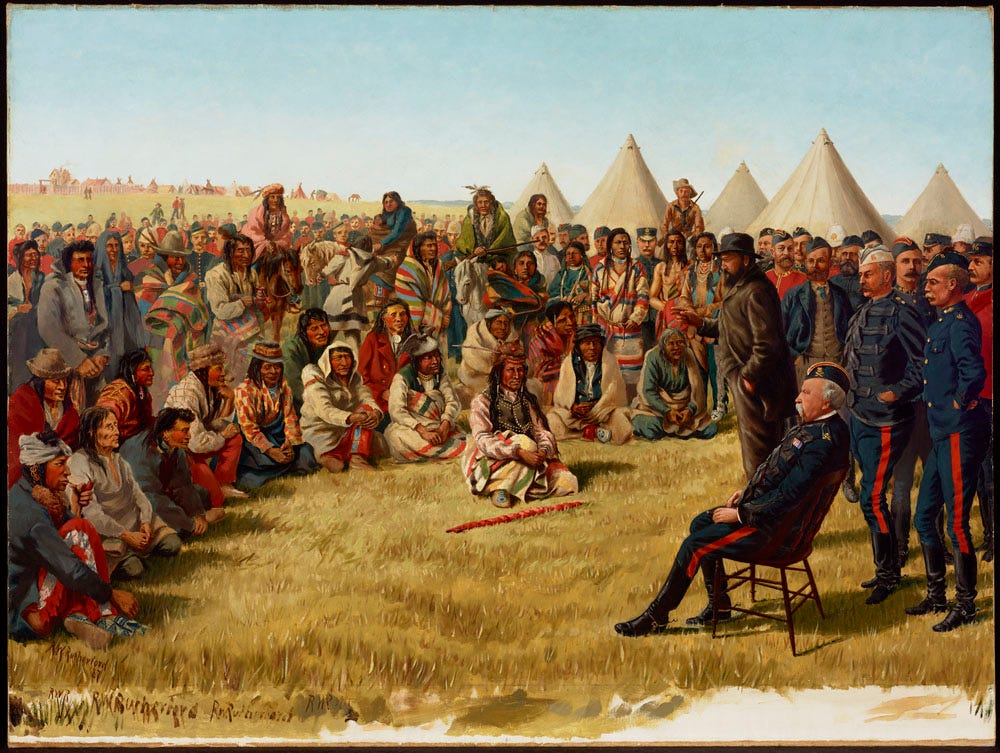
America snatched a considerable portion of Mexico almost effortlessly, but made no inroads in Canada. At the same time that Canadians were guarding their frontier against their much more numerous and extremely aggressive cousins to the south, they were carving civilization out of a climate with some of the most extreme seasonal swings on the planet. The harsh environment exerted two kinds of selection effects. The first was Darwinian: the weak died. The second was as a filter: unlike Australia, where convicts were involuntarily transported as an alternative to hanging, immigrants only came to Canada voluntarily ... and only the toughest of the British were willing to trade the comforts of the shire for the hardships of the Canadian frontier. The result was that the Anglo-Scots-Irish of Upper Canada were steadily annealed into a hearty, capable, and quite dangerous people, matched only by the Norman-derived French Canadians of Quebec – descended entirely from a small founding population of fiercely Catholic fur traders.
To say that Canadians carved civilization out of a forbidding wilderness is almost an understatement. Following the War of 1812, the British constructed the Rideau Canal: the first large-scale engineering project in North America, a 202-kilometre long series of locks connecting Ottawa to Lake Ontario. The Rideau Canal was motivated by the British-American cold war: it provided a secure inland connection between Montreal and Kingston, where one of the largest and most sophisticated fortresses of the era – Fort Henry – was placed in order to dissuade attack, as just one part of a larger network of fortifications. Fort Henry was so successfully intimidating that the Americans never bothered, and the Rideau Canal ended up being used entirely – and extensively – for civilian purposes. Something like a thousand workers died in the Rideau Canal’s construction, mostly from malaria – because it wasn’t enough that Upper Canada was a frozen hellscape during the winter, it was also, at the time, a malarial swamp during the summer6.
Culturally unified and prizing order, Canada was internally quite peaceful ... but this did not mean that Canadians were not fighting. While America was largely fighting Indians, Mexicans, or itself, Canadians were rampaging all over the planet. Canada was, after all, simply a part of the British Empire, and Canadian soldiers therefore shared the British Empire’s conflicts: during the 19th century Canadians fought in the Crimean War, the Indian Rebellion, the Zulu War, the Afghan War, and the Boer War, which was the first time that Canada contributed its own organized regiments, rather than simply joining British formations.
This tradition of foreign adventurism continued into the twentieth century: World War One, World War Two, the Korean War, the Suez Crisis, the Yugoslavian War, and most recently the American Afghan War. In WWI Canada essentially served as Britain’s shock troops: tougher, smarter, and better-disciplined than the British themselves, Canadians proved capable of breaking German fortifications that had stymied the British military, as for example in the famous victory at Vimy Ridge. In WWII Canada mobilized 10% of its population, only slightly less than America’s 12% ... but whereas almost 2/3 of America’s forces were conscripts, Canada’s entire military was composed of volunteers7. By the end of the war the Royal Canadian Navy was the third-largest naval force on the planet, behind only the United States and Great Britain. While not formally part of the Vietnam War, thirty-thousand Canadians went south to volunteer for the American war effort: comparable to the number of draft dodgers who came north, and also roughly comparable at a per capita level to the number of Americans who volunteered for service in Vietnam (2.2 of the 2.7 million who fought having been conscripts).
Martial volunteerism was not limited to Canada’s yeoman class; the upper class contributed as well, paying out of pocket to privately train and equip Canadian military units. The militia unit the Queen’s Own Rifles was originally composed of University of Toronto students banding together to defend against the Fenians, and was initially largely funded via donations from the community and prominent local businessmen. Lord Strathcona’s Horse, the cavalry regiment that was sent to the Boer War – and which continues today as a armoured regiment, having traded horses for tanks – takes its name from Lord Strathcona, the Scottish-born magnate and philanthropist who paid for it. The Princess Patricia’s Canadian Light Infantry was privately raised by Andrew Hamilton Gault for the First World War.
Canadians have a long history of war, and historically, Canadians are very good at war. The Canadian military introduced or refined numerous tactical innovations: trench raiding and the creeping barrage in World War One; mouse-holing for urban combat in World War Two; and a whole string of innovations in the use of snipers, such as integrating them into regular infantry formations, deploying them in two-man scout/sniper teams, and making use of advanced optics, laser-range-finders, and ballistic computers in Afghanistan. The Canadian sniper Master-Corporal Aaron Perry set the world record for the longest-range kill in Afghanistan (2310 m), later superseded by an anonymous sniper with the elite and extremely secretive Canadian special forces unit, Joint Task Force 2, who dropped an ISIS militant at 3540 m in 2017.
It’s no accident that Canada’s unofficial national game is the brutal gladiatorial sport of hockey8, while its official national sport is the even more brutal lacrosse, which is descended from bone-breaking ritualized Indian combat.
Canada’s origin is as an authoritarian, illiberal, reactionary country that maintains strict internal peace and order; it was born as a continental-scale fortification that guarded its frontiers ferociously; it amuses itself with blood sports; it periodically sends out its men in highly trained, well-disciplined military formations to inflict precision devastation upon countries on the other side of the world.
Canada is not supposed to be a relaxed, urbane, soft, limp-wristed pushover multicultural sodomy parade. All of that is fake and gay.
Canada is supposed to be North America’s Prussia.
Many Canadians are only vaguely aware of the history sketched out above. It’s considered distasteful in modern Canada to take pride in military glory. When the military is acknowledged at all, it is only ever mawkishly – the sombre, downcast eyes of Remembrance Day, when everyone wears poppies and stands out in the cold pretending to feel sad for people who died in a war that ended before anyone living was born. Remembrance Day ceremonies are made even more of a travesty in contemporary multicultural Canada, with brown-faced kids from the Punjab wheeled out to lay wreaths at monuments to Canadian war dead in an effort to reassure Canadians – I will not use the redundant qualifier ‘white’ Canadians – that these foreign children care as much as they do, or at all, about the sacrifices made by someone else’s ancestors. This year a school in Ottawa played a Palestinian protest song – it did not play anything else – at a Remembrance Day ceremony, as though Semitic squabbles in the Gaza Strip have anything to do with Canadian boys bleeding out for king and country in the mud of Ypres; in the empty imagination of the modern Canadian liberal, in which there is only abstract ‘violence’ and violence is always wrong, mmkay, this probably makes sense ... it’s all equivalent, you see, it’s all just ‘war’, and we should remember everyone (but especially oppressed brown people, whose suffering matters more than yours, whitey).
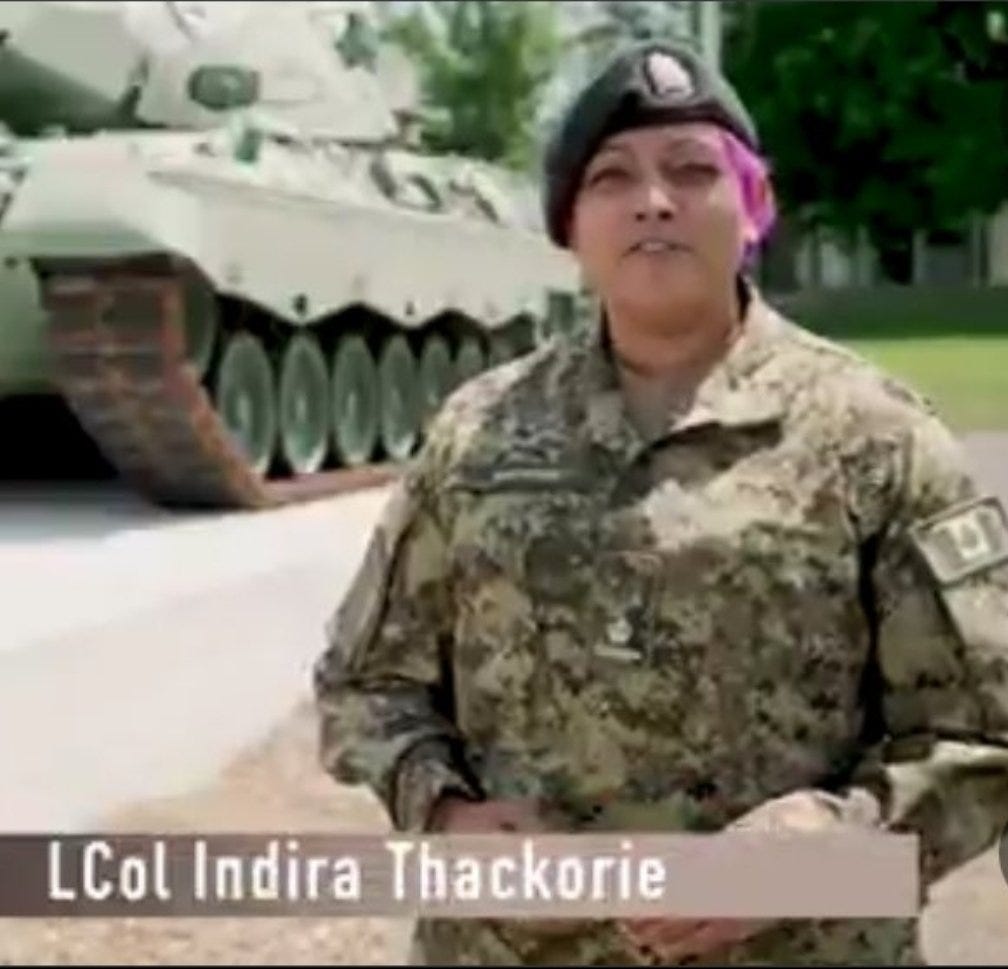
Some Canadians are probably bridling at my less than respectful tone towards Remembrance Day. The point here isn’t that we shouldn’t commemorate our war dead – we should and must. My eyes tear up when the bugle plays Taps, too, and the bagpipes always get me right in the feels. Yet at the same time, there’s a certain dishonest performativity in the pretense of grief for the deaths of people we never knew, who fought for reasons that we have turned our backs on. It’s acting. This has aroused a great nausea within me ever since I was a teenager ... one year I scandalized my English teacher by writing a Remembrance Day poem expressing this sentiment, which she was forced to give me a good mark on, but of course refused to send on to the Legion for consideration in the annual contest9.
Should we not also celebrate our victories? Our prowess in battle? Glory in the fact that armies the world over have learned to fear the cold and murderous professionalism of the Canadian soldier? Can we not acknowledge this icy lethality that is a core part of our nature? Should we not also cheer, instead of simply pretending to cry? By focusing only on the death, on the loss, the memory becomes painful, something to be avoided and suppressed, something to be acknowledged once a year with a perfunctory minute of silence and then passed out of mind. We do not remember Achilles because he died young; we do not weep for him; we recall him because he fought gloriously, and so his immortal name lights a fire in our breasts.
But of course celebration of martial prowess would not suit the Liberal Party, which desires above all else for Canadians to think of themselves as peaceful, as defined by their famous politeness, as a nondescript mass whose most essential characteristic is that they are very nice. Therefore we are only allowed to express regret for war.
Nice, polite, peaceful people are much easier to rule, you see. They become clay in your hands. Disobedience is disorderly. It is rude.
Thus, the CBC has produced virtually no movies relating the human drama of Canada’s wars. We are not allowed to think of ourselves as heroic, violent badasses. We are meant to be embarrassed by heroism, to think only of the dead, to bemoan the senseless waste of it all. Violence is always wrong, mmkay? Don’t you dare smile.
The current self-image of Canada, as a tolerant, peaceful, multicultural, pluralistic shopping mall cum airport lounge, is a false construct, a thin, fragile death shroud wrapped around the Canadian soul by a coalition of managerial revolutionaries seeking to surreptitiously massage the Canadian people out of existence. This project has been accomplished by hijacking Canadian’s instinctive deference to government and dislike of chaos, and imposing heavily upon the Canadian ethos of politeness. The attempt to overwrite the Canadian character was made possible by the void created by the collapse of the Empire, but it took shameless advantage of the habits of thought born of loyalty to it – twisting Peace, Order, and Good Government into parodic paramoralisms. This is not to say that Canadians were wholly uncognizant of what was being done to them. Still, whatever qualms Canadians felt as their symbols were stripped away and new, liberal values were substituted for the old, traditional virtues, so long as the general prosperity was maintained, objections didn’t rise above the level of grumbling letters to the editor.
But the general prosperity has stalled out for some time, now. Canada’s per capita GDP is comparable to Mississippi’s. Ontario’s total debt – not its per capita debt, but its total debt – is larger than California’s, which has a much larger population and economy. Housing is impossibly unaffordable. The fertility rate has fallen to 1.26 children per woman – one of the lowest in the world (and this is without disaggregating recent immigrants, who have a much higher birth rate, i.e. the fertility of Canadians is even more catastrophically low). Wages are pathetic. Investment capital is scarce. Opportunities are nonexistent. Sinecures are handed out on the basis of political connections and ethnic checkboxes. Canada’s best and brightest native sons leave by the droves.
The Good Government of liberalism has accomplished all of these things, all while that same Good Government invades its own country with replacement migrants, at the rate of a million or more, every year, gaslighting the Canadian people that they don’t exist, and that the newcomers are just as Canadian as they are.
The Order it imposes is anarchotyrannical – crushing Canadians under the heavy hand of regulatory micromanagement that spits in the face of every ancient and customary Saxon liberty, while criminals, immigrants, and immigrant criminals run petty scams, smuggle hard drugs, steal cars, launder money, and riot on Diwali as they please.
The Peace Canadians enjoy has become toleration of this slide into oblivion, this quiet euthanasia of the Canadian nation.
There’s no hope, at the moment, politically. The main opposition party, the Conservatives, are simply pale clones of the Liberals, whose main objection to immigration policy is that immigration isn’t happening fast enough. The next-largest party is the New Democratic Party, Canada’s socialists; they are led by a Sikh, so. The only real opposition is the People’s Party of Canada, which is led by a libertarian, and while he says good things on immigration, the party has not a single seat in parliament, and will be lucky to scrape together a handful of seats in the next election. So far, the PPC has not connected with the Canadian people.
Perhaps something more meaningful will happen in the future. There’s an enormous reserve of latent energy locked up within the Canadian psyche, just waiting to be accessed by someone who comes along to remind Canadians of who they really are, to put them back in touch with their true nature, and to render in stark terms the contradiction between the genuine soul of their nation and the tumorous overgrowth of the revolutionary state that is trying to suffocate that nation unto death.
This will not be done simply by reminding Canadians of their history in Canada, as Canadians; this is necessary, but insufficient. An exclusive focus on purely Canadian history would be the sort of inward-looking self-absorption that is too redolent of the ‘Canadian content’ with which Canadians have been inundated for decades. Canadians are a naturally adventurous people: they are descended from settlers who chose the hardships of the frigid Canadian wilds over the soft comforts of home; to this day, Canadians travel abroad more than almost any other people. No – to be meaningful, such a national revival needs to situate itself in the context of the history of the world, particularly the history of the Anglo-Saxons, all the way back to when Hengist and Horsa led them from the mists of mythohistory into the mists of Albion. Canadians must be reminded that they are a continuation of a tradition of conquest and settlement going back 1500 years ... that far from being one of the world’s newest peoples, we are one of its oldest; that, far from being an afterthought, we are the very tip of the Anglo-Saxon spear ... the smallest part, but the sharpest, the coldest, the hardest, and the deadliest.
Just as our current menu of political parties are largely hopeless, so the media landscape in Canada is deeply depressing. The legacy media can be passed over without comment – it is wholly an extension of the liberal project and the Liberal Party, as wretched and dishonest as the legacy media in any country suborned by the managerial regime. Underground or dissident media however is also generally awful, usually just a pale reflection of American conservatism, unreflectively adopting American memes and talking points in the same dumb fashion that Algerians in the Parisian banlieues LARP as American hood rats, and then rendering that appropriated memetic framework tedious and bland by filtering it through the Canadian desire to be nice, to be polite, to not offend. The problem with this is that MAGA is actually a terrible fit for Canada, as a result of which it doesn’t connect – the reason Trump resonates with Americans so powerfully that he could kick over the political chessboard is that Americans look at him and see the embodiment of their national character, both good qualities and bad, amplified to gargantuan proportions. There is essentially no one in the Canadian political space engaging with the genuine, deep Canadian character. That’s why I’ve sprinkled links to the work of my friend
so liberally through this essay – he’s almost the only person doing this, and Canadians need to read him. Here’s another, directly relevant to the subject of this paragraph.The British Empire isn’t coming back, and a national identity based on loyalty to a dead empire is a dead letter. But the Anglo-Saxon root that informs the Anglo-Canadian character is something much deeper than the British Empire. The principles of tradition, duty, loyalty, integrity, industry, and military honour that Canada formed around are timeless ... and they are principles whose time, here in the twilight of the liberal world order, is coming again. Seeing ourselves in our full historical context, remembering who we really are, Canadians may really see ourselves for the first time. We might then – as adventurers, settlers, and conquerors have always done – spread our imaginations and designs to the future, and inspire ourselves to new adventures, new settlements, new conquests. The northern frontier is still largely unsettled ... but the more advanced technology we have now, should we choose to use it – modular nuclear reactors, aerial transport, 3D manufacturing – might yet break the spruce bogs and tundra. And then, of course, there is Mars, the asteroids, the Galilean moons, and everything beyond ... colder and harder by far than Canada has ever been. Who better than Canadians – or whatever filial nations Canada spawns on the high frontier – to tame them? Do you think the Indians can do this? The Chinese? The Africans?
I can hear the naysayers already: “Mars is a pipe dream, it will never happen, it’s too hard, there isn’t enough oil, we need to focus on taking our countries back!” Yes, indeed, taking back the country is the proximate goal. The point of such wild-eyed visions is not to escape reality. But a people that has forgotten itself, that has lost sight of its role in history, that has lost touch with its nature, that has no grand projects around which to coalesce, will never fight for its existence ... because such a people does not believe that it even exists. A spearpoint needs a shaft, but it also needs something to point at; a people need a history, but they also need a goal. Having found both, a nation again finds its confidence; having regained confidence, it will fight for its place in the world.
If the Canadian nation is to persist into the future, if it is to pull itself back from the precipice of a quiet extinction, it is going to have to fight.
Thank you for taking the time to read this loquacious disquisition on the character of a people unfairly maligned, particularly amongst themselves, as very boring. I hope that you learned a few things, whether you’re Canadian or not ... but if you are Canadian, I especially hope that this gave you something to think about. If it did, I encourage you to
with as many Canadians as possible. The hour is late. Canadians have lied to themselves for too long about who they really are.
My boundless gratitude to my supporters, who make it possible for me to devote myself full time to sending these missives from my Martian redoubt. A lot of work goes into these: I don’t just bang them off willy-ninny, but spend many hours writing, revising, editing, expanding, deleting, rewriting, wandering around in a daze as the ideas swirl around in my head, to say nothing of poking around in obscure corners of the Internet to dig up the artwork (the curation of which takes more time than you might think). And yet I provide it all for free, relying entirely on the generosity of patrons who receive nothing for their money aside from my thanks, and the knowledge that it is their munificence that enables these words to reach the free seats.
While my thoughts are free, my dreams – and my nightmares – are more precious, and therefore more private. These are available only for the paying VIPs. Here’s what readers have said about my first short story:
“This is the best fiction I've read on Substack. Props.” “Holy crap dude. This is fantastic” “That packed a wallop!” “I see some greatness in this writing, and I see this expanding beyond earth. Good, male oriented fiction is hard to come by.” “I am unsatisfied only because it ended so quickly.” “I'm ready for the movie.”
Quebec very nearly left the country in a narrow 1995 referendum in which 49.5% of the province’s population voted to separate. It is widely believed in Anglo Canada that had the rest of the country been able to vote on the issue, Quebec would be its own country now.
Well actually a Brazilian investment firm has Timmies, but anyhow.
Ontario, Quebec, and Newfoundland being the exceptions.
The lyrics of which were recently changed from “true patriot love in all our sons’ command” to the more politically correct but ungrammatical “in all of us command”.
Those they didn’t simply evict at bayonet point: the Acadians were ethnically cleansed and forced to resettle in Louisiana, where they became the Cajuns.
Malaria isn’t native to North America; it was brought by settlers and slaves. It was thankfully eradicated by a combination of cold winters and drainage projects.
Technically, conscription was enacted at the end of the war, but the 12,000 who were actually conscripted were a rounding error compared to the volunteers.
Even the way Canadians play hockey is noted by other countries for its casual savagery. Swedes, one of the world’s other great hockey-playing nations, often berated me for my countrymen’s pugilistic habits on the ice: to their mind, the rules clearly stated that fighting was illegal; to the Canadian mind, they merely state that you go into the penalty box for fighting, so if you’re willing to do the time, you can do the crime. Canadians treat hockey as a martial art. Another anecdote to illustrate the point: an army buddy once related how he’d gotten into a fight with some Asian kid, who started pulling some kung fu nonsense; being a hockey player, he simply pulled the Asian kid’s shirt over his head, and started punching him in the face. He won the fight of course.
Which, I’ll admit, was partly strategic on my part. I didn’t want to enter the Legion contest.





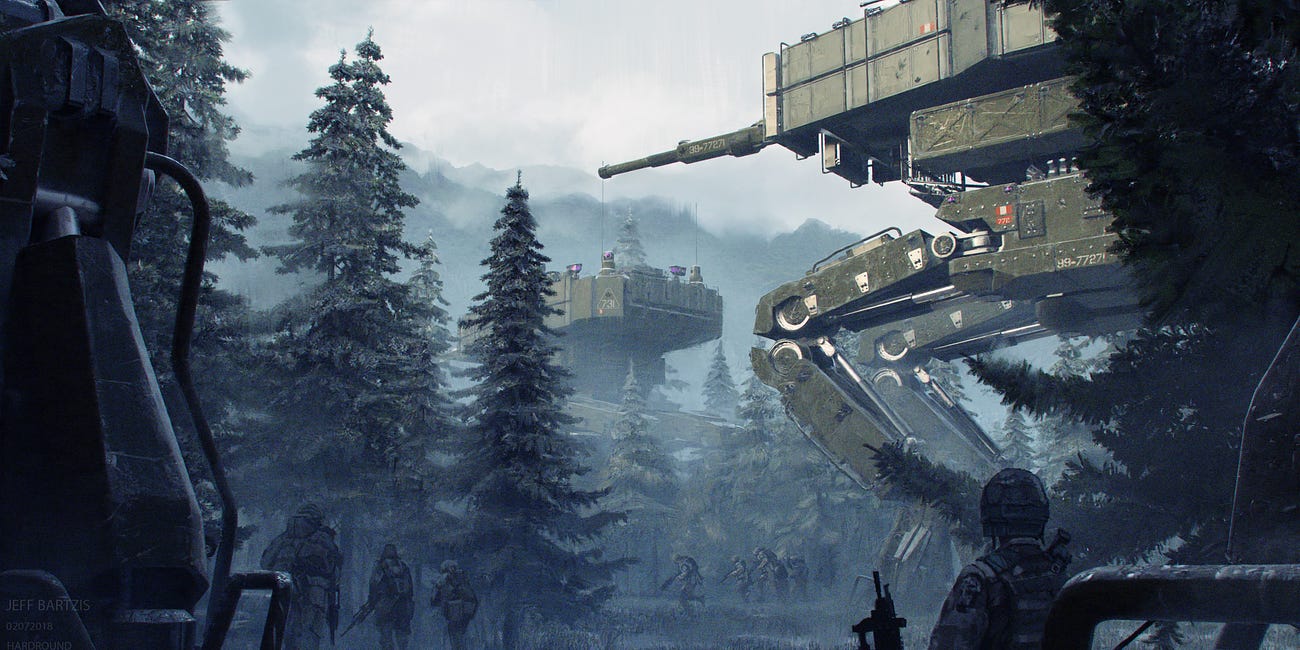
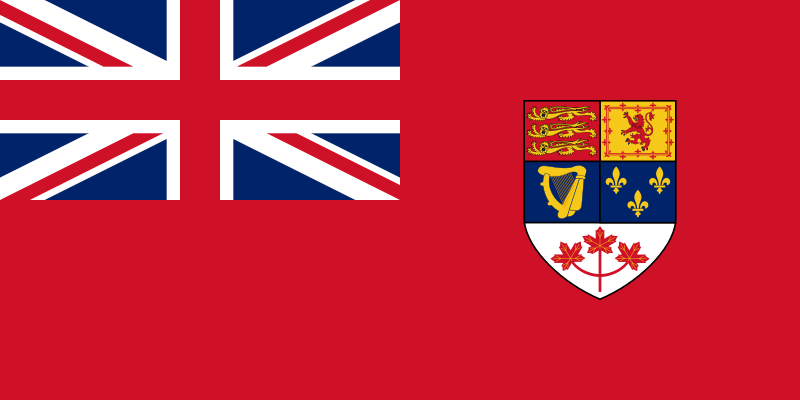
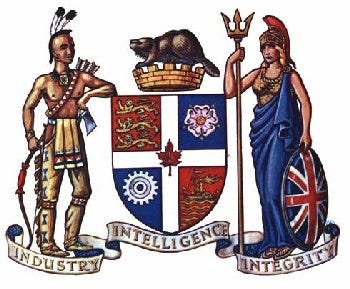
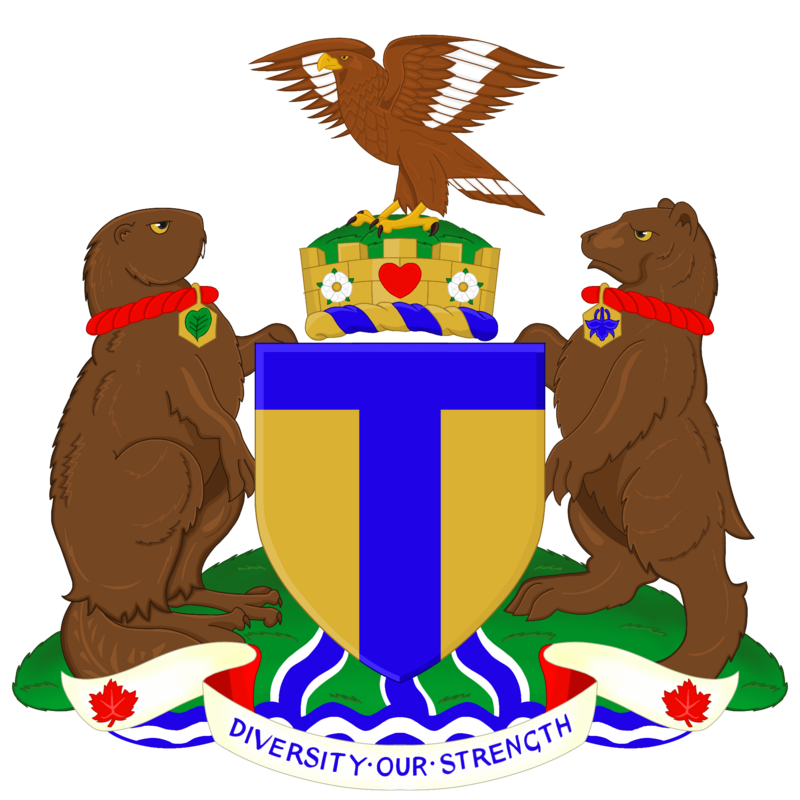
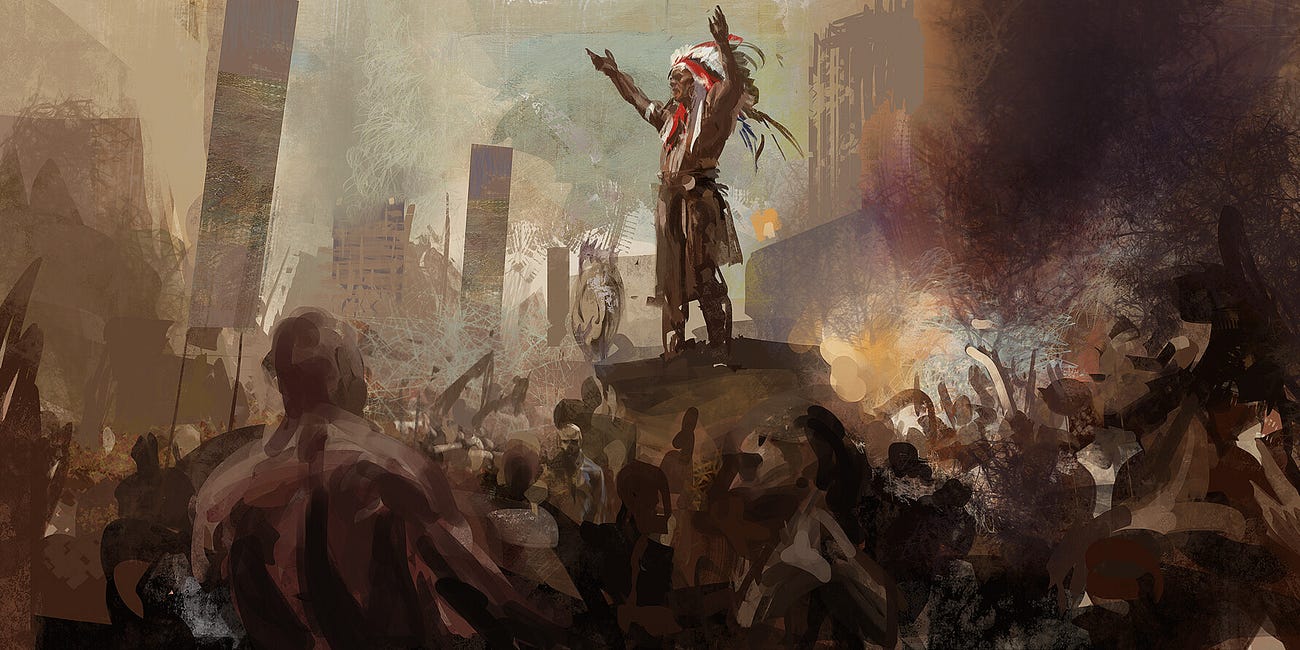
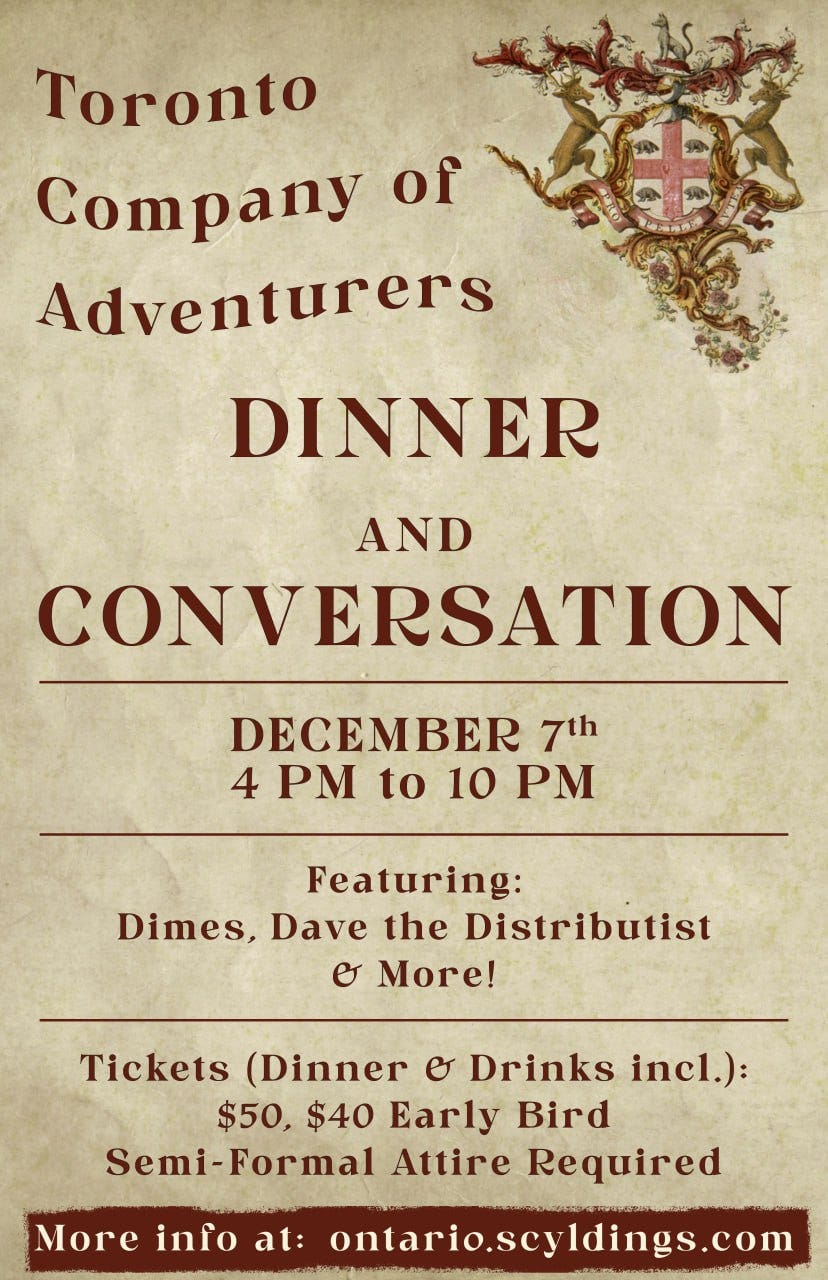

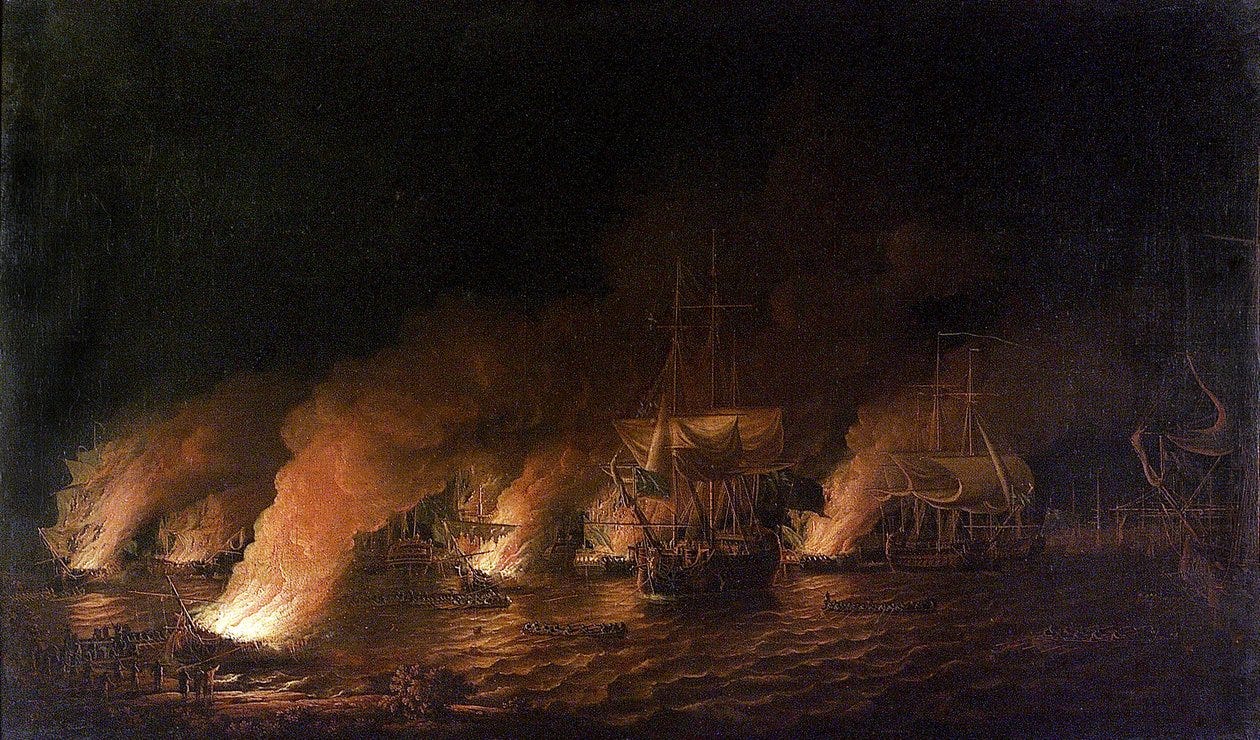
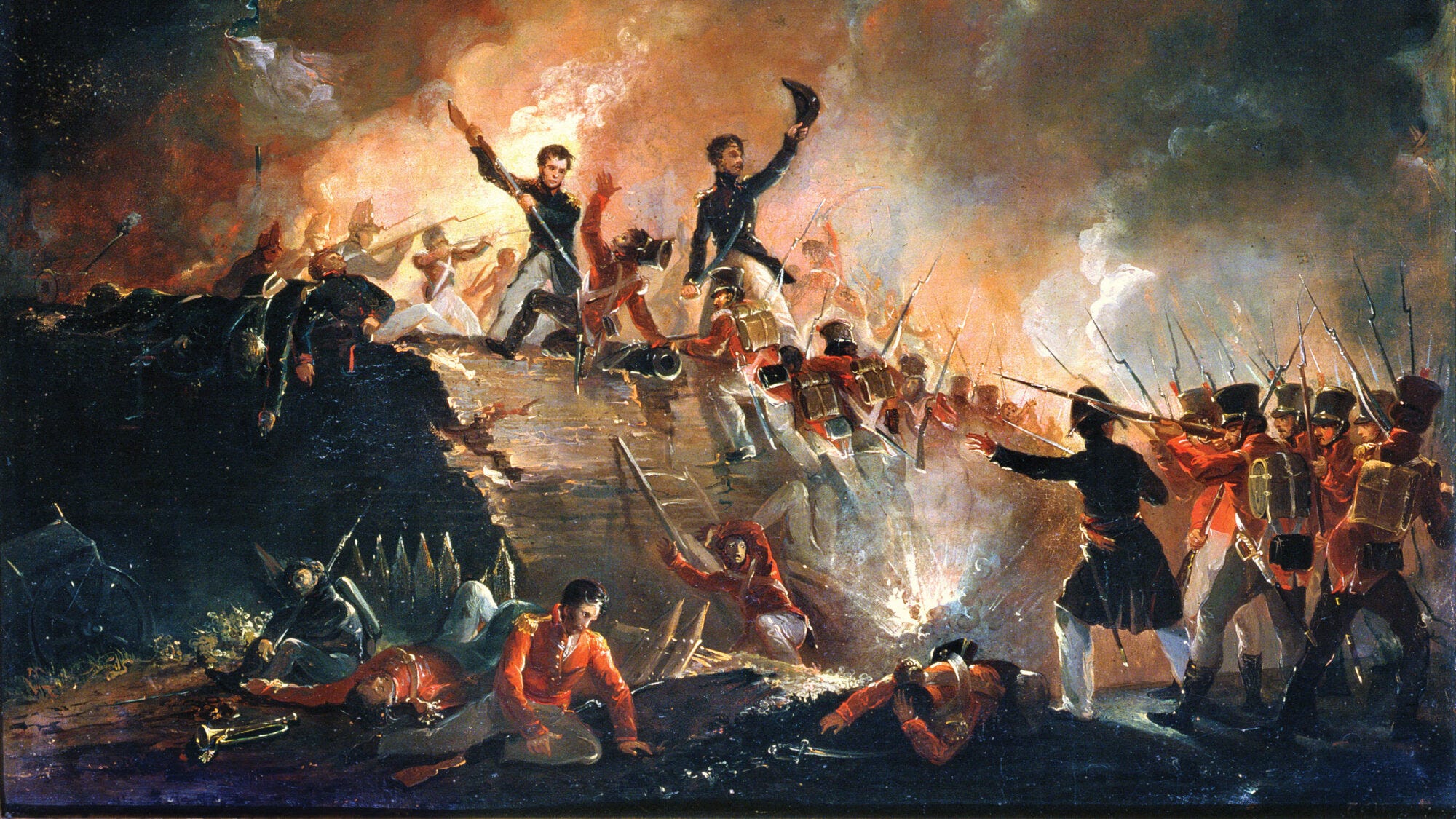
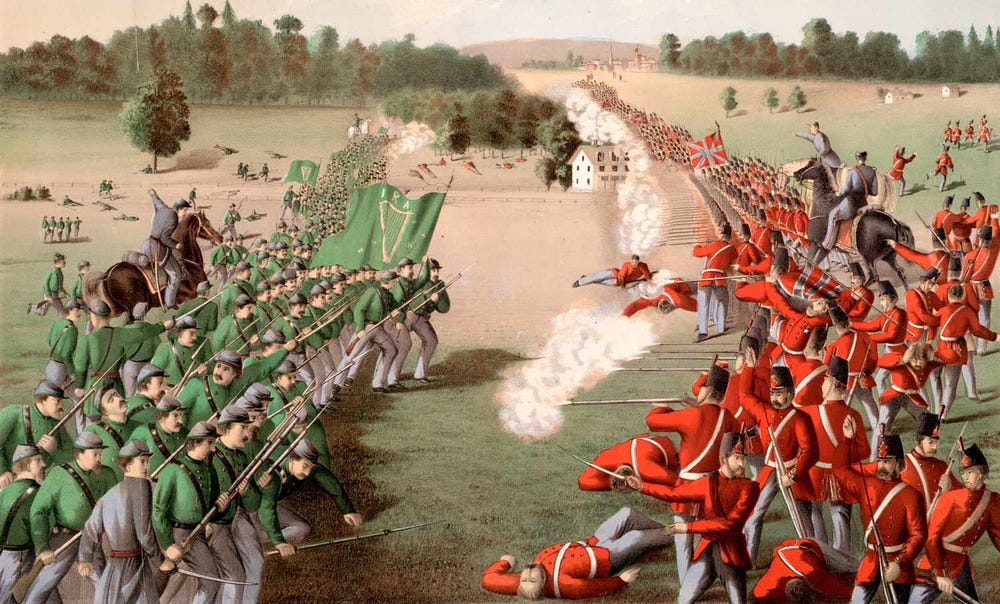
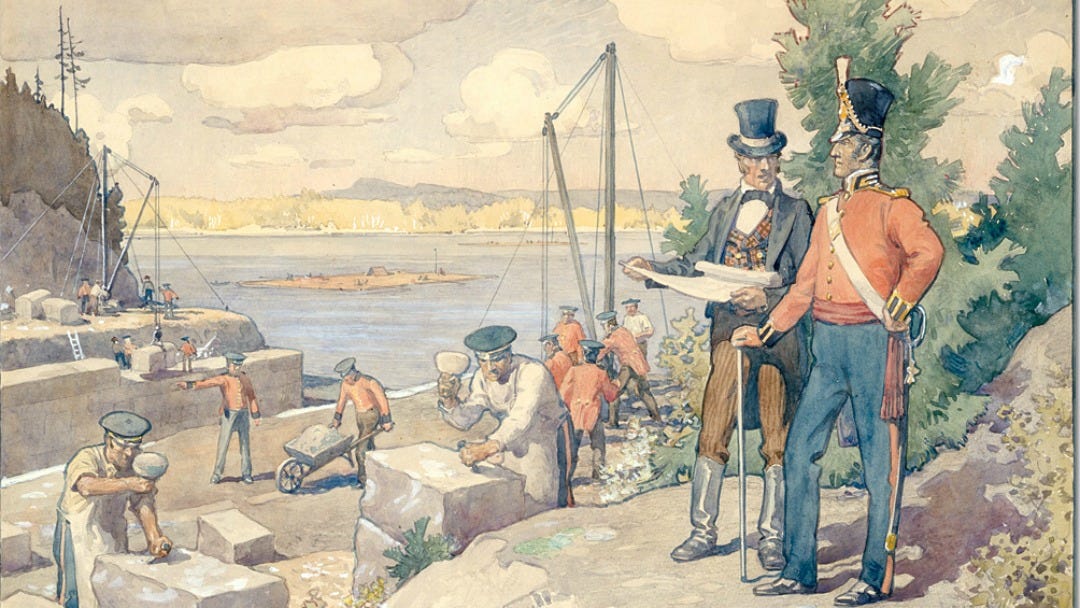
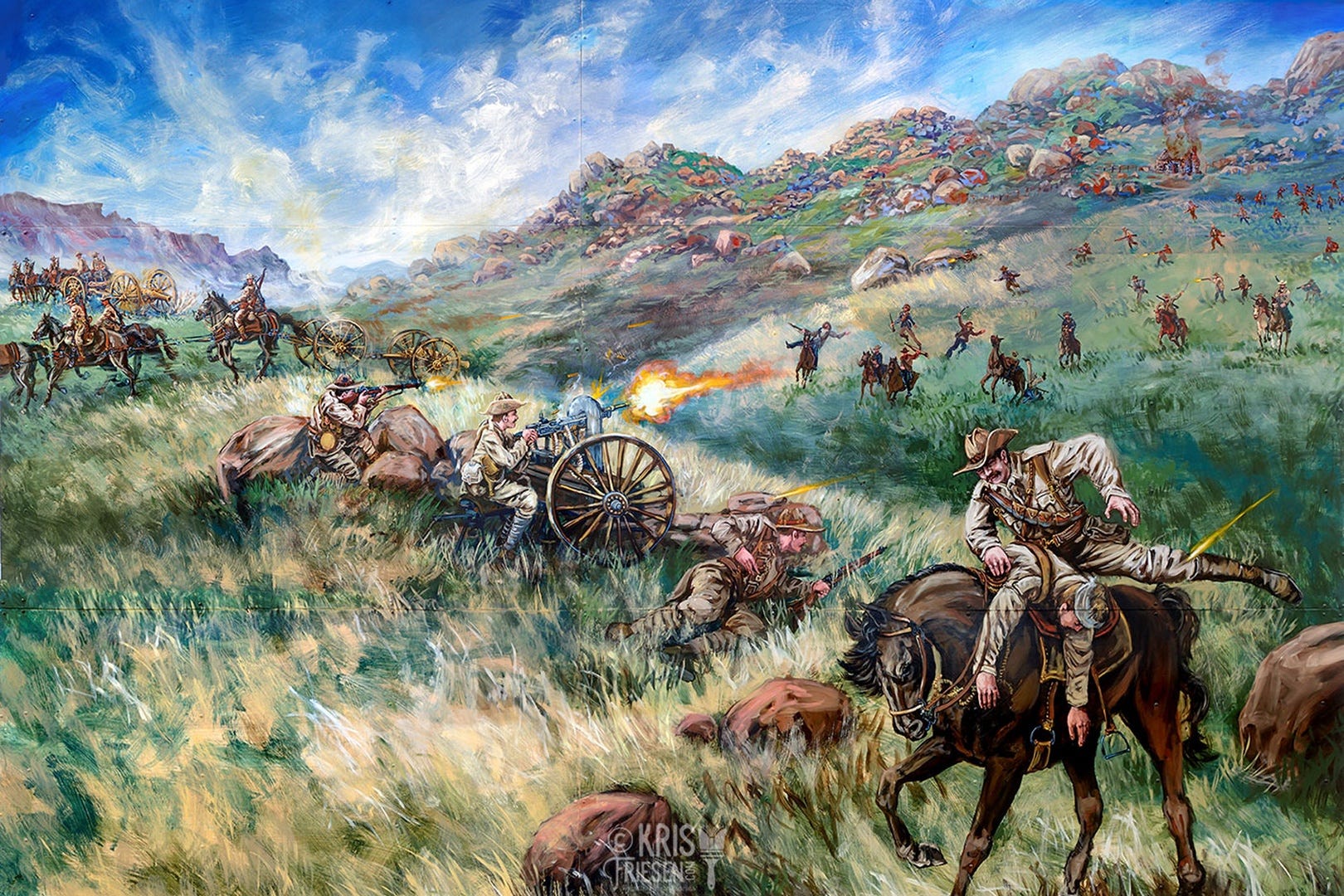
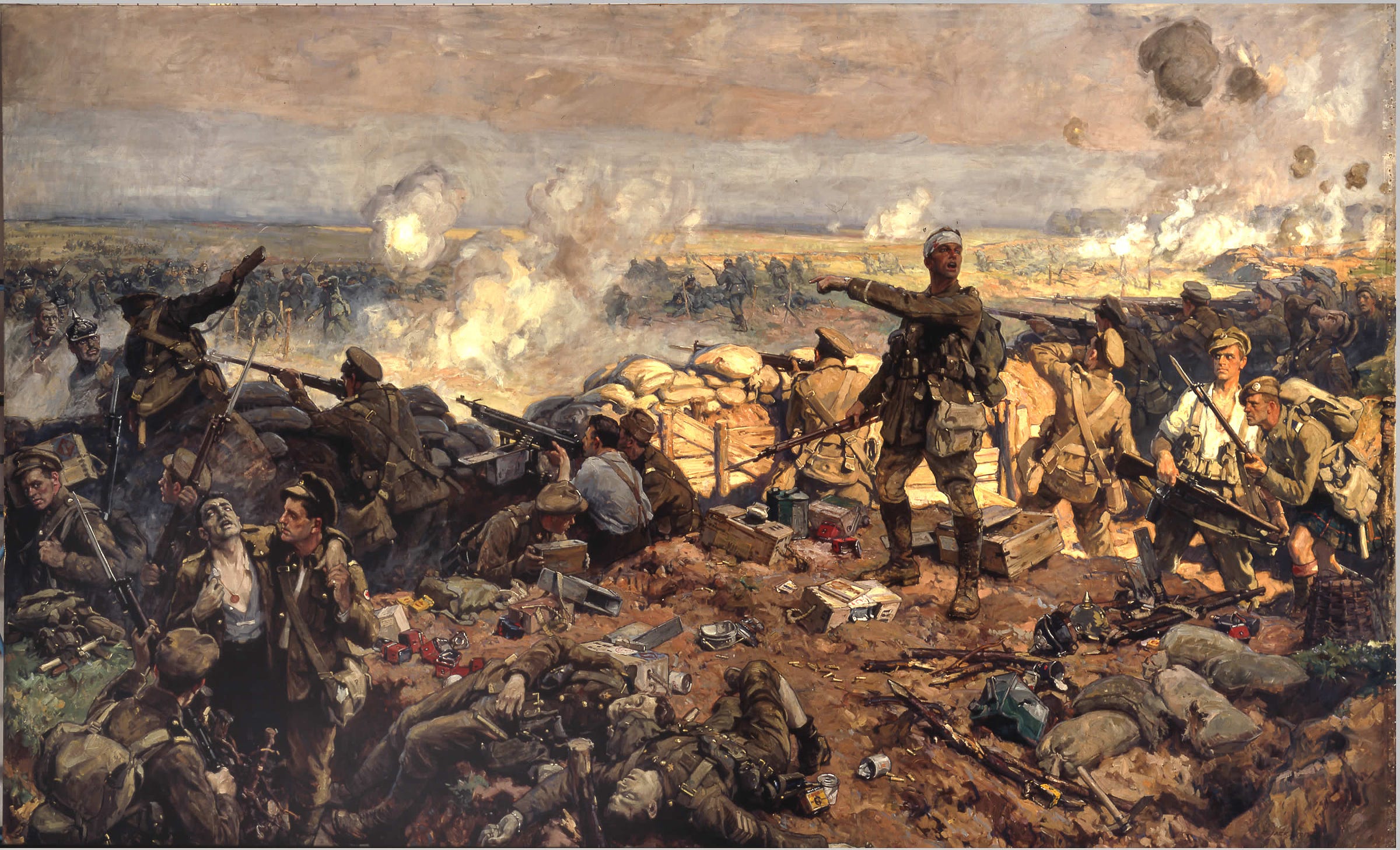
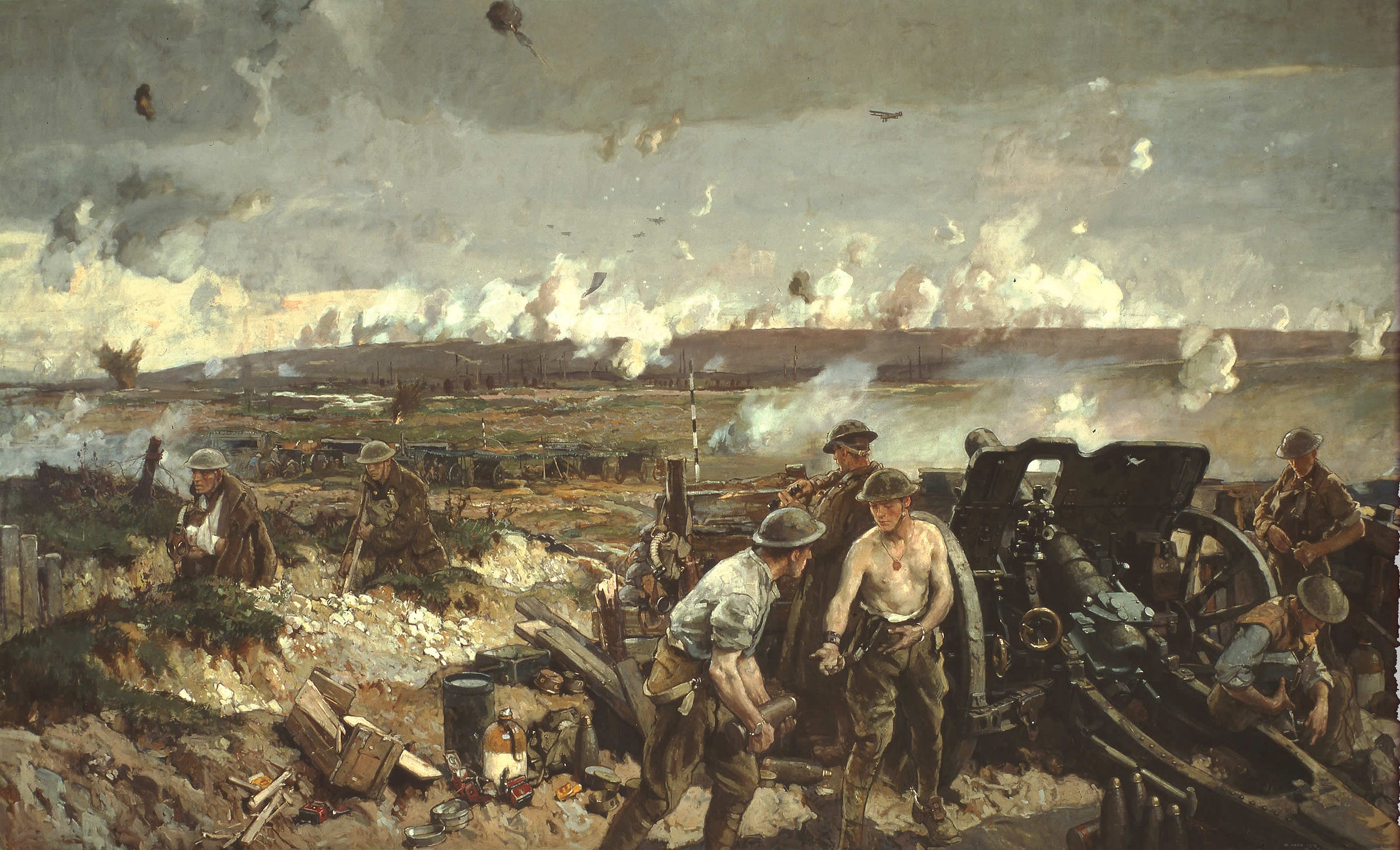
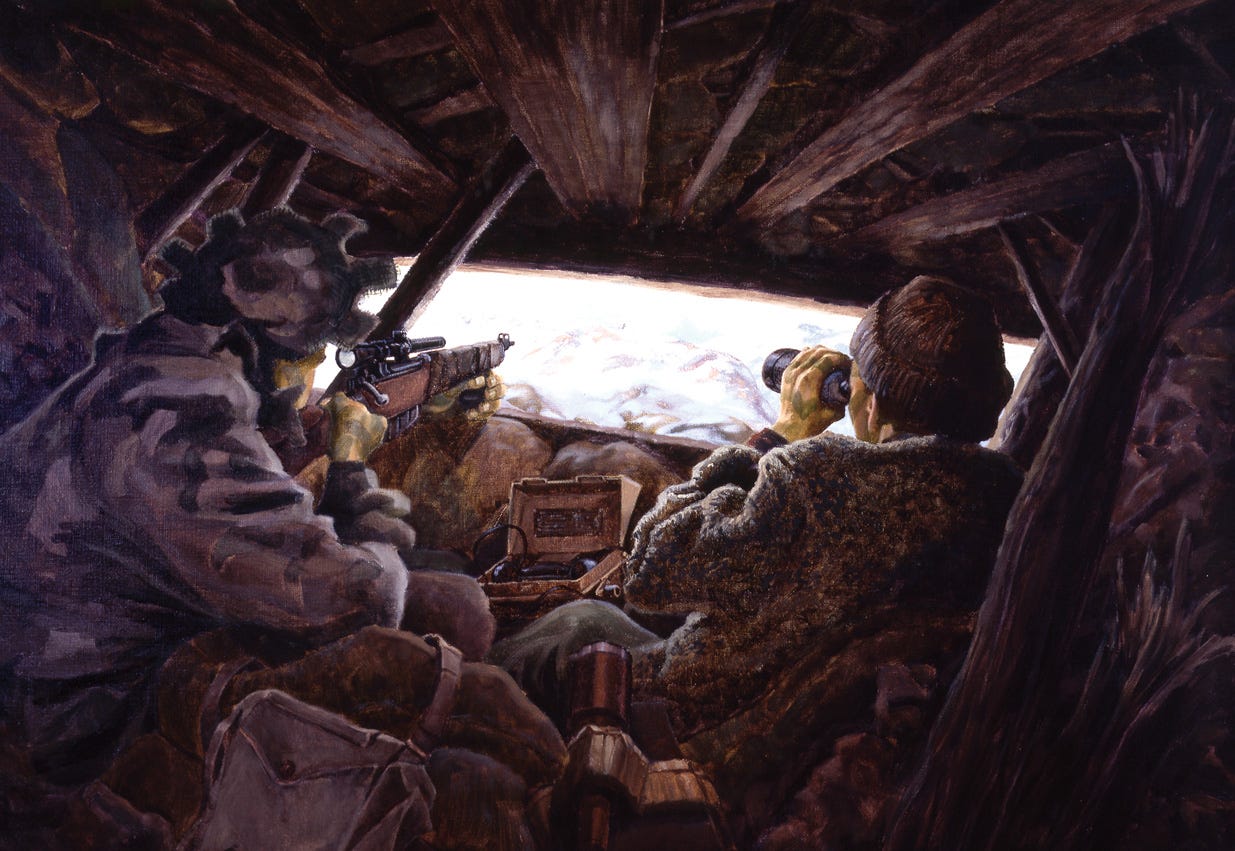
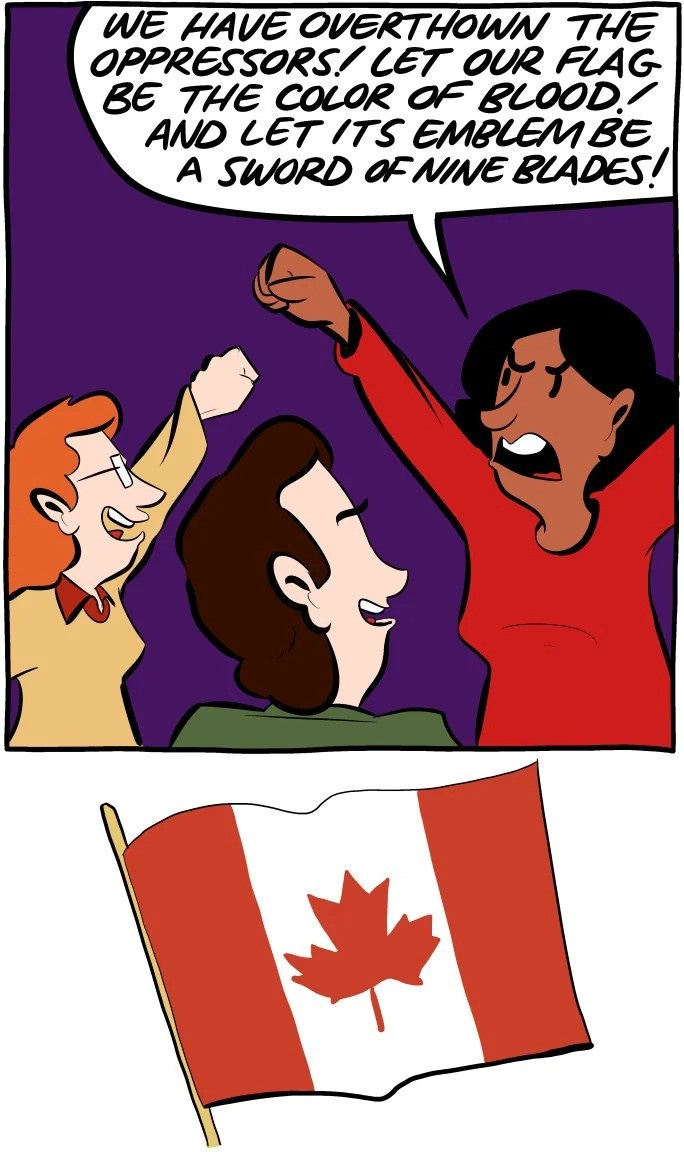
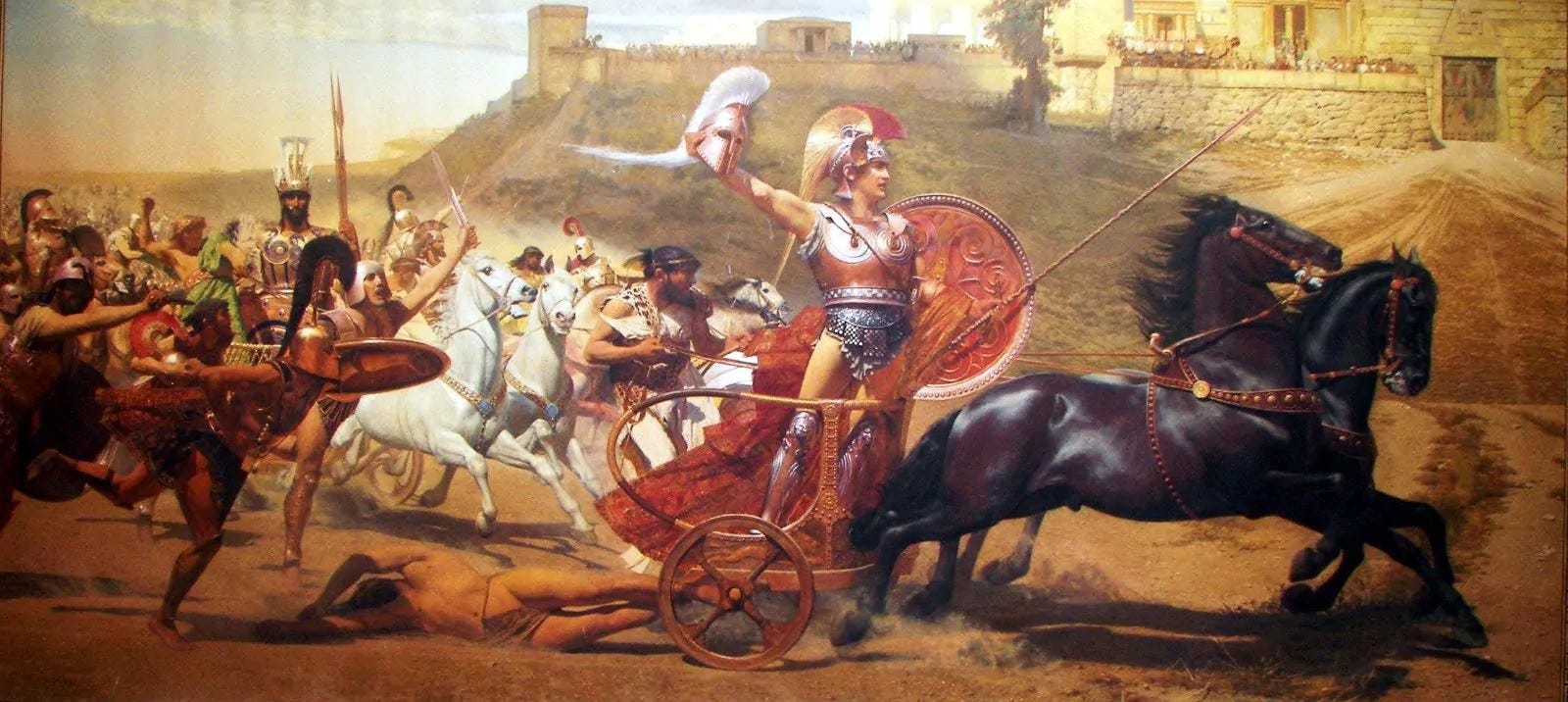
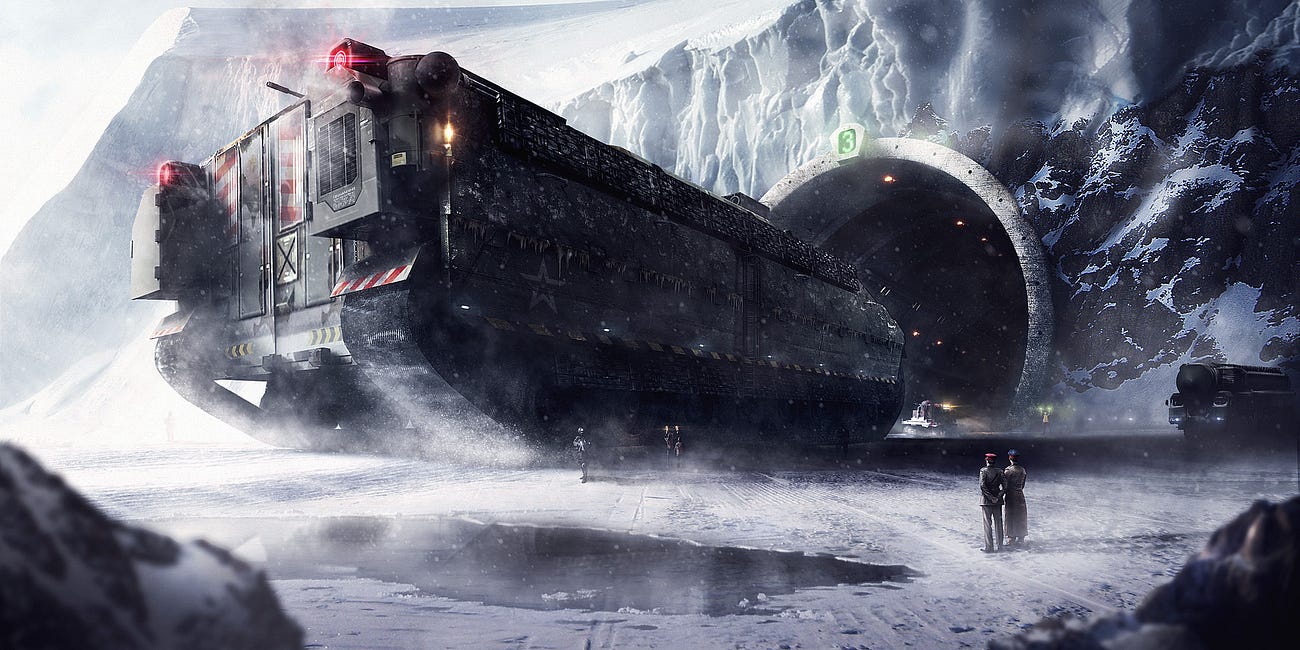
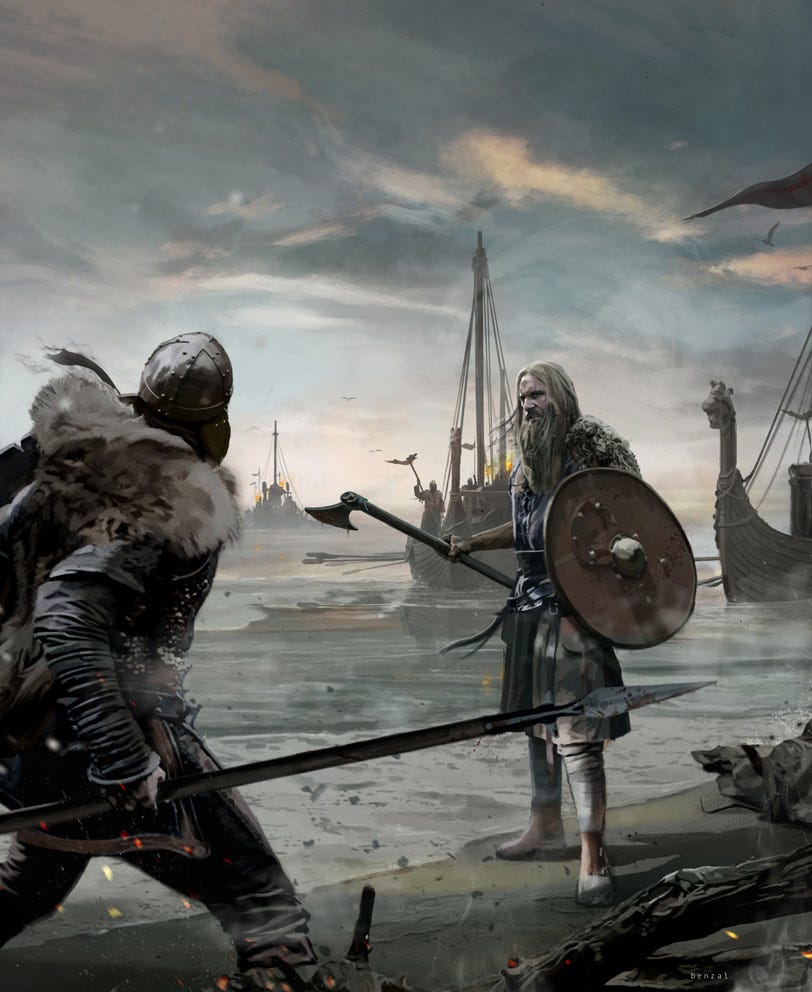

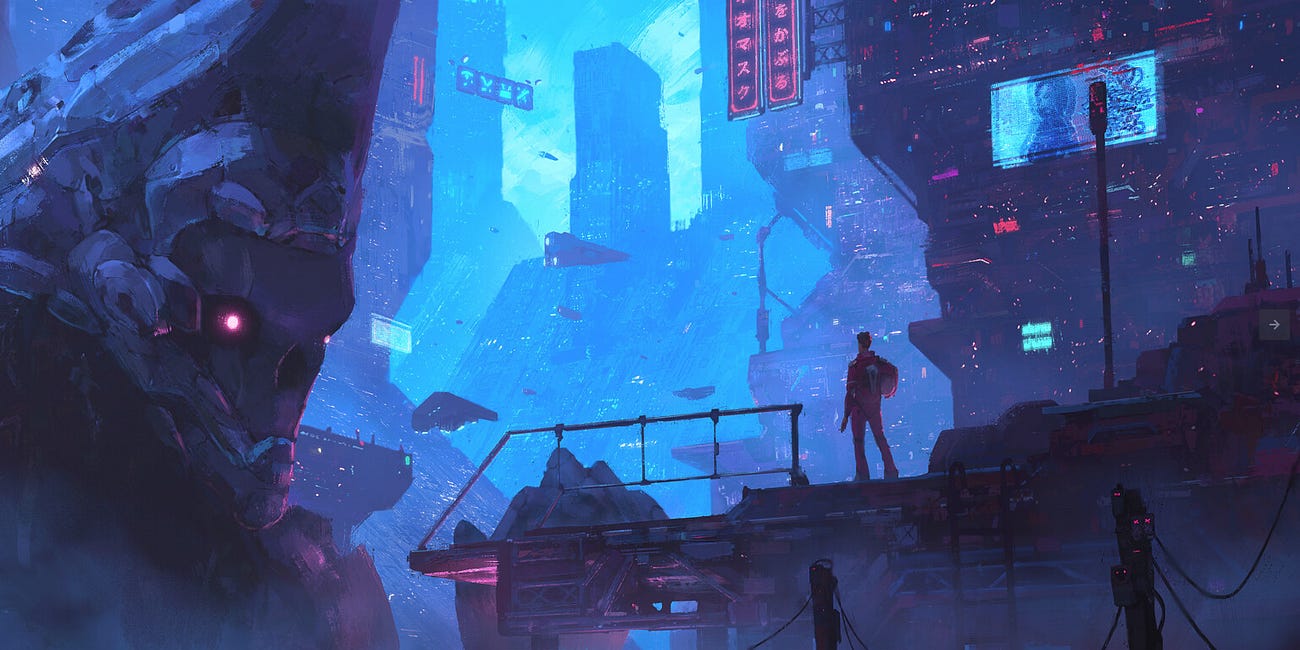
Magisterial piece. Not much else to say, only that watching Comrade Chow lead a procession of cretins with their mindless "land acknowledgement" incantations during Toronto's Remembrance Day Ceremony crystallized in my mind the complete and utter decay of virtually institution of note in this country. That fat, wretched HR-tard LARPing as a soldier you linked to shouldn't even be allowed to clean the toilets in the Highlanders' armoury, much less serve in it. I *suppose* that's a good thing if any of us fears the military might be used against us by a future Liberal/NDP regime, as they wouldn't last five minutes against highly skilled bushmen in the Canadian shield. But against the low-T and nonbinary folx at Yonge and Bloor? Absolutely.
Where to go from here? I don't place much stock in Poilievre, but, I suppose, better than nothing. Who knows, there may be a backbencher elected from some rural Alberta or Saskatchewan riding that may surprise us and go onto greater things. I think part of the change has to be generational: I approve of Trump's emerging cabinet of young 40-somethings, many with military backgrounds. Maybe some of the veterans of Afghanistan might find it in themselves to take up a battle once more, only for this country and not a neo-con war machine. They may look at their kids and say, fuck this, I have to do *something*.
As a librarian, it's the older histories I'm trying to collect and become aware of to help counter the fetid dreck that university presses are churning out. Ted Barris, for one, has written wonderful histories of Canadian involvement in The Dam Busters raid, the Great Escape, and many other pivotal battles. I suspect as well that Pierre Berton's histories might also still prove worthwhile, and there *is* an emerging, non-orthodox community of scholars emerging online and in smaller presses; a recent work called Grave Injustice, put the lie to the residential school genocide hoax, but getting books like that past the far-left gatekeepers of academia and librarianship will take some work (the latter also an increasingly decayed profession I'm afraid).
I do agree with your assessment of the "emerging right" online community: not enough Matt Taibbi, too much Ezra Levant (although he has done some good) and other shameless grifters. Unfortunately we just don't, as yet, produce talent on par with a Rogan or some other figure. But, gotta start somewhere...
The soft effete liberal Canada is completely foreign to my experience growing up on the wind blasted prairies.
My childhood was cracking cold and endless winters. Hockey in old wooden barns colder than a witch’s tit. It was tending to cattle, ice fishing and chopping wood. It was hard drinking and foul mouthed men in curling rinks that were so cloudy with cigarette smoke you couldn’t even see inside. It was Don Cherry calling out Euros for being soft pussies for wearing a visor
It was beer gardens in the summer surrounded by large leather faced farmers that could squash a hornet in their bare hands. Baseball in some dusty field and pure cold lakes on hot summer days.
I don’t remember when this all changed when we became the waiting room for the world’s refuse. When everywhere feels like an airport at best and a foreign bazaar at worst but we are sadder for it.